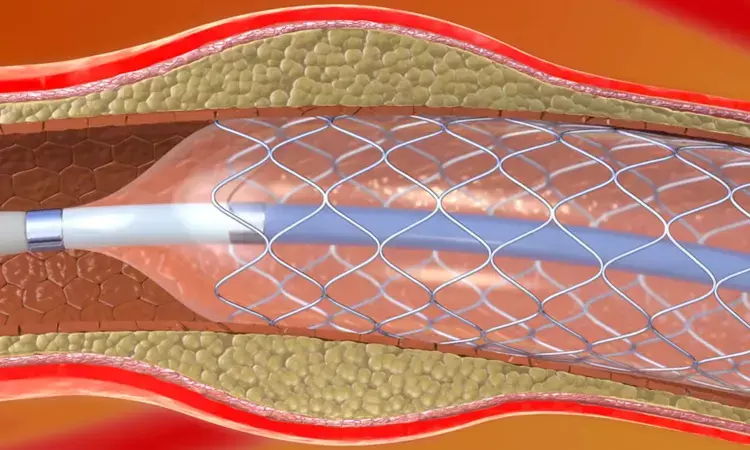- Home
- Medical news & Guidelines
- Anesthesiology
- Cardiology and CTVS
- Critical Care
- Dentistry
- Dermatology
- Diabetes and Endocrinology
- ENT
- Gastroenterology
- Medicine
- Nephrology
- Neurology
- Obstretics-Gynaecology
- Oncology
- Ophthalmology
- Orthopaedics
- Pediatrics-Neonatology
- Psychiatry
- Pulmonology
- Radiology
- Surgery
- Urology
- Laboratory Medicine
- Diet
- Nursing
- Paramedical
- Physiotherapy
- Health news
- Fact Check
- Bone Health Fact Check
- Brain Health Fact Check
- Cancer Related Fact Check
- Child Care Fact Check
- Dental and oral health fact check
- Diabetes and metabolic health fact check
- Diet and Nutrition Fact Check
- Eye and ENT Care Fact Check
- Fitness fact check
- Gut health fact check
- Heart health fact check
- Kidney health fact check
- Medical education fact check
- Men's health fact check
- Respiratory fact check
- Skin and hair care fact check
- Vaccine and Immunization fact check
- Women's health fact check
- AYUSH
- State News
- Andaman and Nicobar Islands
- Andhra Pradesh
- Arunachal Pradesh
- Assam
- Bihar
- Chandigarh
- Chattisgarh
- Dadra and Nagar Haveli
- Daman and Diu
- Delhi
- Goa
- Gujarat
- Haryana
- Himachal Pradesh
- Jammu & Kashmir
- Jharkhand
- Karnataka
- Kerala
- Ladakh
- Lakshadweep
- Madhya Pradesh
- Maharashtra
- Manipur
- Meghalaya
- Mizoram
- Nagaland
- Odisha
- Puducherry
- Punjab
- Rajasthan
- Sikkim
- Tamil Nadu
- Telangana
- Tripura
- Uttar Pradesh
- Uttrakhand
- West Bengal
- Medical Education
- Industry
TyG and TyG-BMI Indices Predict NAFLD Risk in PCI Patients: Study

Researchers have identified in a new study that the Triglyceride-Glucose (TyG) index and TyG-BMI (Triglyceride-Glucose-Body Mass Index) are potent predictors of non-alcoholic fatty liver disease (NAFLD) in patients undergoing percutaneous coronary intervention (PCI). The research concluded that elevated TyG and TyG-BMI were not only associated with a higher risk of NAFLD but also with severe liver fibrosis, which indicates their potential as easy-to-use clinical tools to assess risk early. The research was published in the Frontiers in Endocrinology by Yingxiang Chen and colleagues.
The investigation was a cross-sectional examination of 776 patients who had coronary angiography and PCI. Participants were divided into two groups based on abdominal ultrasound: PCI with NAFLD (305 patients) and PCI without NAFLD. Patients were subsequently stratified based on their TyG and TyG-BMI indices. Statistical analysis comprised ANOVA, Wilcoxon-Mann-Whitney, t-tests, χ² tests, and Fisher exact tests to compare groups. Multivariate logistic regression was employed to determine independent risk factors for NAFLD, whereas ROC curves examined the predictive value of TyG and TyG-BMI. Lastly, linear correlation and multivariate regression compared the association between NAFLD fibrosis score (NFS), TyG, and TyG-BMI.
Results
• NAFLD was found in 305 of 776 PCI patients. On multivariate analysis adjusted for confounding variables like age, smoking, hypertension, diabetes, gender, and cardiovascular disease, TyG and TyG-BMI were both identified as independent risk factors for NAFLD.
• TyG index: The increased risk was associated with each unit increase (OR = 2.63; 95% CI, 1.78–3.8; P < 0.001).
• TyG-BMI index: With each unit increase, it was associated with a 3.80-fold increased risk of NAFLD (OR = 3.80; 95% CI, 2.55–5.68; P < 0.001).
• Other risk factors were total cholesterol, triglycerides, LDL cholesterol, fasting blood glucose, and BMI.
• With regard to the severity of liver fibrosis, a one-unit increase in the TyG index increased the NFS value by 0.247 (β = 0.247; 95% CI, 0.19–0.45; P < 0.001), and a one-unit increase in the TyG-BMI index increased it by 0.344 (β = 0.344; 95% CI, 0.28–0.59; P < 0.001).
The research concluded that TyG index and TyG-BMI are positively correlated with the risk of NAFLD and with increased severity of liver fibrosis in PCI patients. These results emphasize the significance of metabolic indices in cardiovascular populations and imply that inclusion of TyG and TyG-BMI in regular evaluation might enhance early detection and control of NAFLD in already high cardiovascular risk patients.
Reference:
Dr Riya Dave has completed dentistry from Gujarat University in 2022. She is a dentist and accomplished medical and scientific writer known for her commitment to bridging the gap between clinical expertise and accessible healthcare information. She has been actively involved in writing blogs related to health and wellness.
Dr Kamal Kant Kohli-MBBS, DTCD- a chest specialist with more than 30 years of practice and a flair for writing clinical articles, Dr Kamal Kant Kohli joined Medical Dialogues as a Chief Editor of Medical News. Besides writing articles, as an editor, he proofreads and verifies all the medical content published on Medical Dialogues including those coming from journals, studies,medical conferences,guidelines etc. Email: drkohli@medicaldialogues.in. Contact no. 011-43720751


